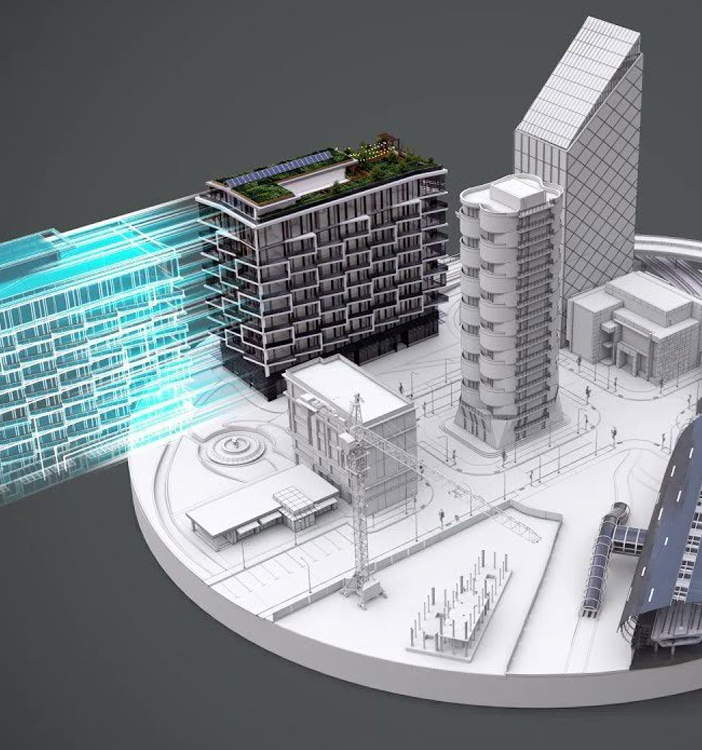
The architecture, engineering, and construction (AEC) sector is known for its traditional methods and slow adoption of technological advancements and innovations. It is considered one of the least digitized industries, with significantly lower investments in research and development compared to other sectors and is also facing severe labour shortages. As a result, its productivity growth is lagging other more digitalized industry sectors, e.g., the manufacturing sector
“We’re not coming together as best we could and not being as open as we could. The reason … is liability.” -George Mokhtar, Turner & Townsend
Benefits
Improved Collaboration and Communication
- BIM (Building Information Modelling): Enhances collaboration among architects, engineers, and construction teams by creating a shared digital representation of the building.
- Cloud-based Platforms: Facilitate real-time communication and document sharing among all stakeholders, regardless of location.
Increased Efficiency and Productivity
- Automation and Robotics: Reduce the time and labour required for construction tasks, such as bricklaying or concrete pouring.
- Prefabrication and Modular Construction: Allow for components to be manufactured off-site and assembled on-site, speeding up the construction process.
Cost Savings
- Digital Twins: Create virtual models of buildings that can predict maintenance needs, optimize energy use, and reduce operational costs.
- Project Management Software: Helps in tracking budgets, schedules, and resources more effectively, minimizing waste and overruns.
Enhanced Design and Visualization
- Virtual Reality (VR) and Augmented Reality (AR): Enable clients and stakeholders to visualize projects before they are built, improving design accuracy and client satisfaction.
- Generative Design: Uses algorithms to explore a multitude of design options quickly, optimizing for factors like cost, efficiency, and aesthetics.
Sustainability
- Energy modeling and Simulation: Helps in designing buildings that are energy-efficient and environmentally friendly.
- Smart Building Technologies: Enable buildings to adapt to environmental conditions, optimizing energy use and reducing carbon footprints.
Improved Safety
- Drones and Wearables: Monitor construction sites for safety hazards, ensuring compliance with safety regulations.
- AI and Machine Learning: Predict potential risks and accidents, allowing for proactive measures to be taken.

Future Trends
- Advanced BIM and Digital Twins: The use of BIM will evolve to include more advanced digital twins, providing real-time data and analytics throughout the building’s lifecycle.
- AI and Machine Learning: AI will play a larger role in predictive maintenance, risk management, and optimizing construction processes.
- IoT (Internet of Things): More construction equipment and building components will be connected, providing valuable data for improving efficiency and performance.
- Robotics and Automation: Increased use of robotics for tasks such as bricklaying, painting, and inspection, reducing labor costs and improving precision.
- Sustainable and Smart Building Solutions: Greater emphasis on sustainability, with smart buildings that manage energy use, water consumption, and indoor climate autonomously.
- 3D Printing: Expanded use of 3D printing for constructing building components and even entire structures, reducing material waste and construction time.
- Blockchain: Blockchain technology for secure, transparent, and efficient contract management, supply chain logistics, and compliance tracking.

Conclusion
Digital integration in architecture and construction is revolutionizing the industry, bringing numerous benefits such as enhanced collaboration, efficiency, cost savings, and sustainability. The future will see even more advanced technologies like AI, IoT, robotics, and blockchain, further transforming how buildings are designed, constructed, and maintained.


